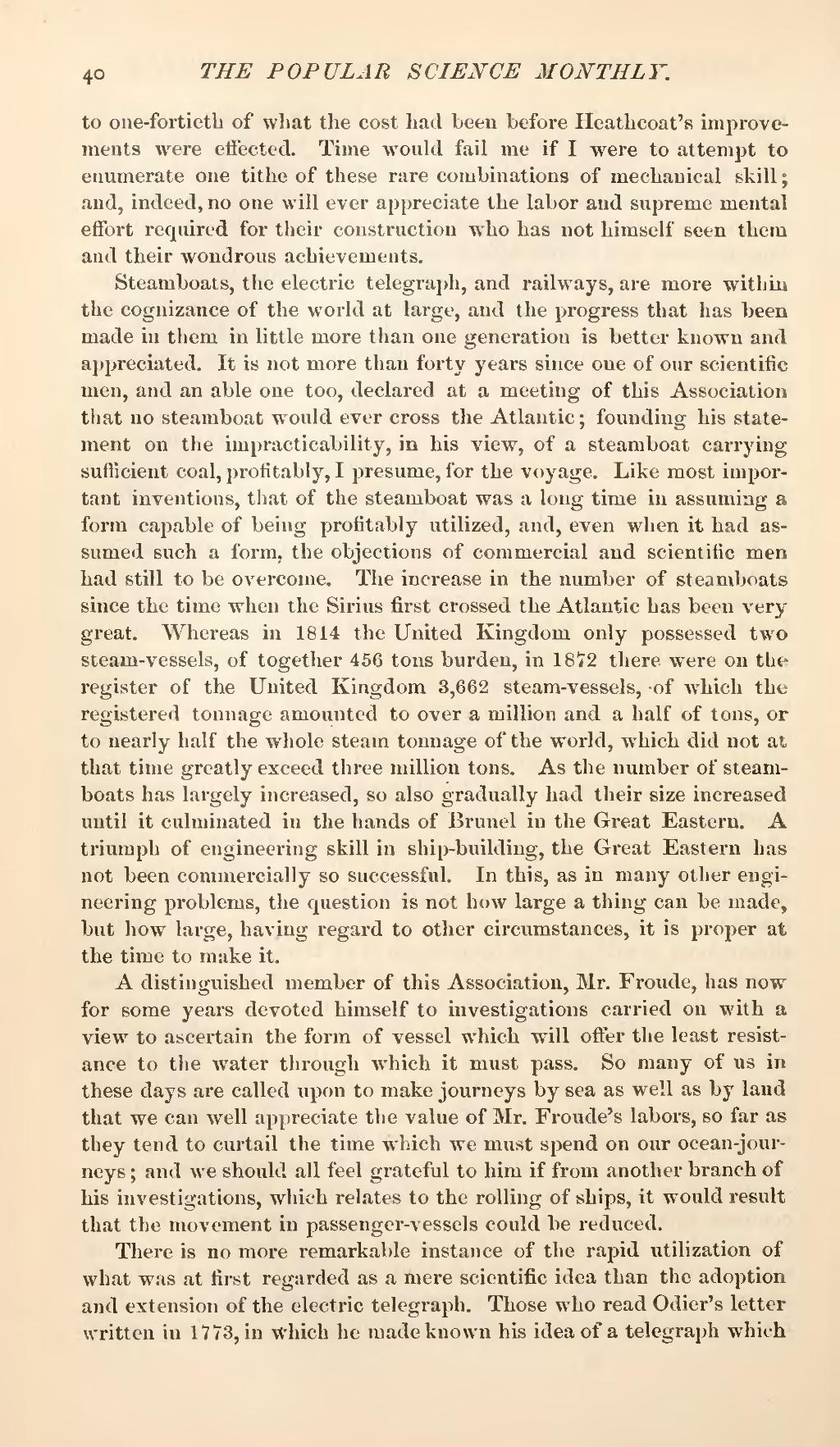to one-fortieth of what the cost had been before Heathcoat's improvements were effected. Time would fail me if I were to attempt to enumerate one tithe of these rare combinations of mechanical skill; and, indeed, no one will ever appreciate the labor and supreme mental effort required for their construction who has not himself seen them and their wondrous achievements.
Steamboats, the electric telegraph, and railways, are more within the cognizance of the world at large, and the progress that has been made in them in little more than one generation is better known and appreciated. It is not more than forty years since one of our scientific men, and an able one too, declared at a meeting of this Association that no steamboat would ever cross the Atlantic; founding his statement on the impracticability, in his view, of a steamboat carrying sufficient coal, profitably, I presume, for the voyage. Like most important inventions, that of the steamboat was a long time in assuming a form capable of being profitably utilized, and, even when it had assumed such a form, the objections of commercial and scientific men had still to be overcome. The increase in the number of steamboats since the time when the Sirius first crossed the Atlantic has been very great. Whereas in 1814 the United Kingdom only possessed two steam-vessels, of together 456 tons burden, in 1872 there were on the register of the United Kingdom 3,662 steam-vessels, of which the registered tonnage amounted to over a million and a half of tons, or to nearly half the whole steam tonnage of the world, which did not at that time greatly exceed three million tons. As the number of steamboats has largely increased, so also gradually had their size increased until it culminated in the hands of Brunei in the Great Eastern. A triumph of engineering skill in ship-building, the Great Eastern has not been commercially so successful. In this, as in many other engineering problems, the question is not how large a thing can be made, but how large, having regard to other circumstances, it is proper at the time to make it.
A distinguished member of this Association, Mr. Froude, has now for some years devoted himself to investigations carried on with a view to ascertain the form of vessel which will offer the least resistance to the water through which it must pass. So many of us in these days are called upon to make journeys by sea as well as by land that we can well appreciate the value of Mr. Froude's labors, so far as they tend to curtail the time which we must spend on our ocean-journeys; and we should all feel grateful to him if from another branch of his investigations, which relates to the rolling of ships, it would result that the movement in passenger-vessels could be reduced.
There is no more remarkable instance of the rapid utilization of what was at first regarded as a mere scientific idea than the adoption and extension of the electric telegraph. Those who read Odier's letter written in 1773, in which he made known his idea of a telegraph which
